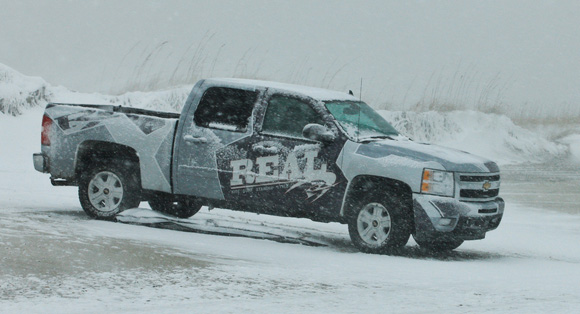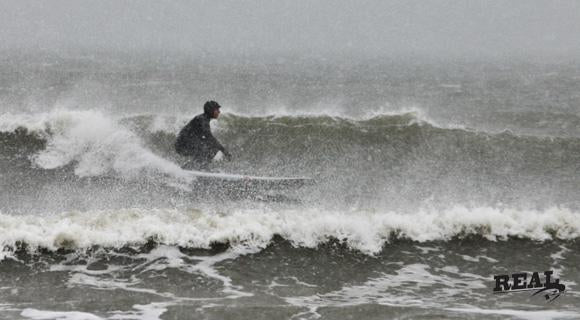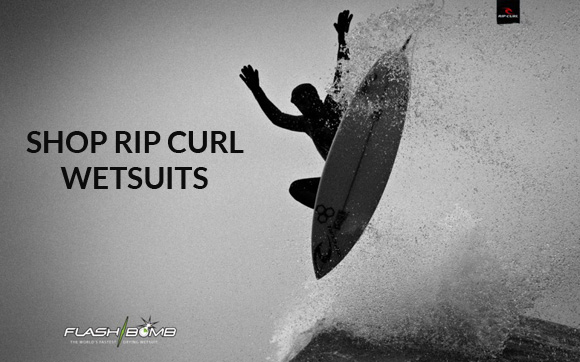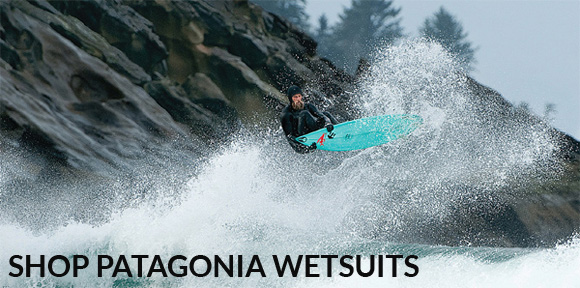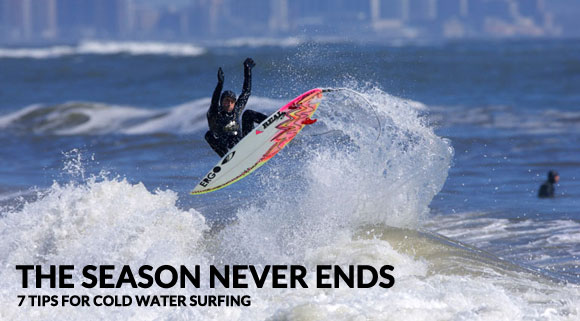
Fall and Winter are here and so are dropping water temps. Here are 7 coldwater tips to keep you charging as temps drop and conditions get juicy…
1. Coldwater surfing is 50% attitude and 50% gear. You really have to be amped to go out when it’s cold. If you’re shivering and complaining at 69F, then winter sessions might not be your calling. If you’re fired up for no crowds, thick winter swells and howling offshores, then you’re already halfway there!
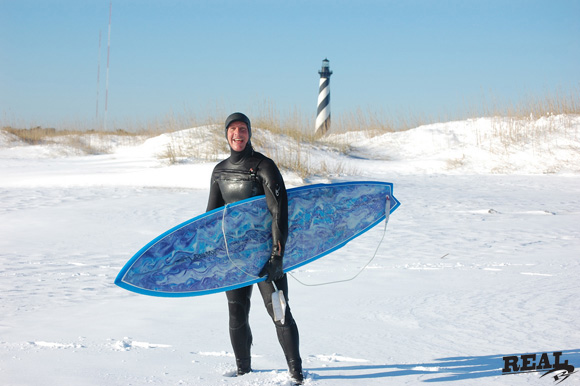
The other 50% of the equation is having a good coldwater wetsuit, gloves and boots. Now that you see wetsuit hoods in all the photos and videos, it seems they’ve been ranked as “cool” again. Gone are the days of wearing a suit without a hood because you “didn’t like the hood”. Wear a good hooded winter wetsuit and enjoy countless duck dives without getting flushed. The new suits are way more flexible, lighter and make surfing in 40f/40f or colder, comfortable for several hours at a time. Good boots and gloves (that don’t leak) also make a HUGE difference.
2. Get dressed/undressed indoors. If you have the option of putting your wetsuit, boots and gloves on indoors…..DO IT! This makes you warm from the start and also makes you go surfing when you get to the beach rather than bagging it because it’s too cold or too high tide or something.
Once you’re done surfing, go straight home in your suit and change out of it in a HOT shower. The bottom line is that the worst part of coldwater surfing is standing butt-ass-naked in a windy, frozen, asphalt parking lot. If you can do either of these or both indoors, the session will feel twice as warm.
3. Don’t undersize your coldwater wetsuit. A lot of the new suits are so stretchy, that many surfers size them down as much as a half size so they don’t get too baggy over time. Don’t do this with your winter, hooded wetsuit. You don’t want the 4mm , 5mm and 6mm suits super tight in the shoulders. These thicker suits will not stretch out over time like the 3mm and 2mm suits do. If the winter suit you’re trying on (or own) feels super tight and restrictive in the shoulders, it’s definitely going to hamper your paddling endurance.
4. Choose Warm. There’s a trend to always go shorter on boards and thinner on wetsuits. Maybe it’s in our human nature to torture ourselves? With older suits that were less flexible, it made sense to go thinner to improve the paddling flexibility of the suit. Now that suits are so stretchy, you’re better off just being warm and flexible in the right thickness suit, rather than cold and stiff in a suit that doesn’t really paddle all that much better anyway.
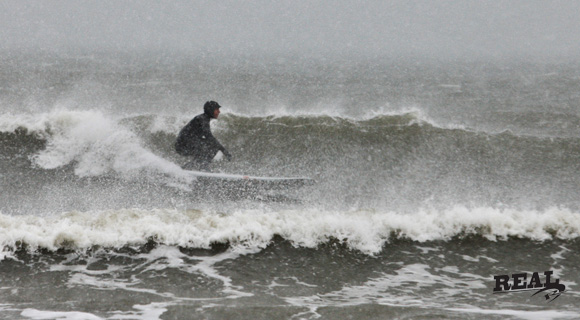
5. Your first few sessions always seem to take longer…. No matter how good your suit and accessories, it always seems like a mission to get all the gear on, especially the first few coldwater sessions of the season. Take your time and know that after a few sessions you will get the routine down and it will feel not much harder than putting on your boardshorts. Keeping your socks on to help slide your feet through the suit, makes pulling on the legs of your suit way faster. Obviously take them off before you put your boots on, unless you have some high calf socks that say “Bacon Fat” on them. Those you should wear on the outside of your wetsuit.
6. Buy a box fan. You can normally get these for $10-15 at a thrift shop or Walmart/K-Mart. After you’re done surfing, hang dry your suit on the supportive hanger supplied by the manufacturer, then lay all your boots and gloves out with the openings pointed towards the box fan on low. This will dry out your gloves and boots overnight and help avoid that nauseous, puking feeling you get every time your hand gets close to your nose. Drying these items out avoids the rank greenery that grows inside them when left wet, causing them to smell like poo.
7. Re-think your Winter quiver. The pros can ride the same size boards in their 5/4mm suit as they do in their trunks. Everyone else feels heavy and sluggish when they put all that gear on. If you take a winter wetsuit, boots and gloves and soak them in water, they can weigh as much as 12 pounds. Not only are you carrying that extra weight around, you are also slower to your feet. To compensate for this added weight, some surfers shelve their low volume shortboards over the winter, while others size up a special “winter quiver” with a few extra liters of volume. Is it worth getting new boards just for the winter? Many surfers claim that winter brings their best surf, so if you’re getting after it and are serious about charging straight through the coldest months of the year, this might be something to consider. On the flip side, if you get a board during the summer that ends up being a bit too big, save it for a “winter board” before ditching it right away.
REAL Teamrider Josh Mulcoy finds freezing perfection in Iceland:
